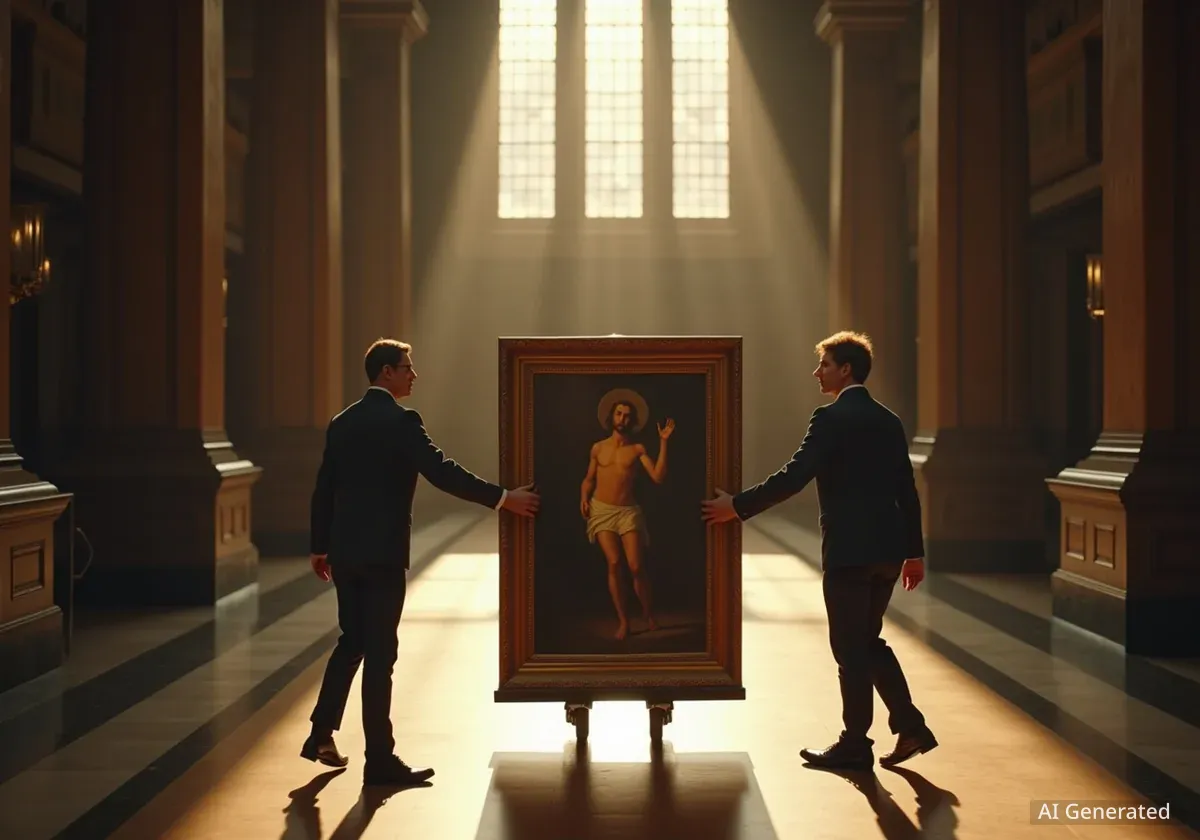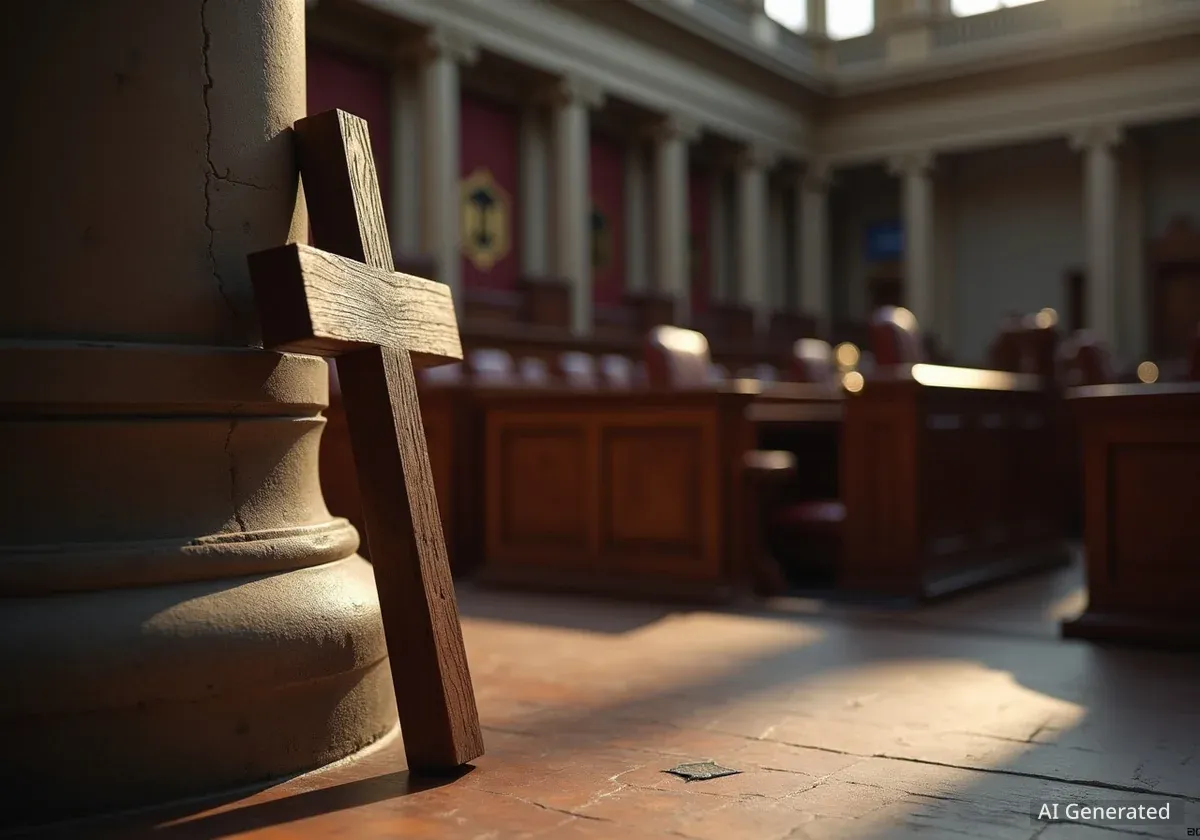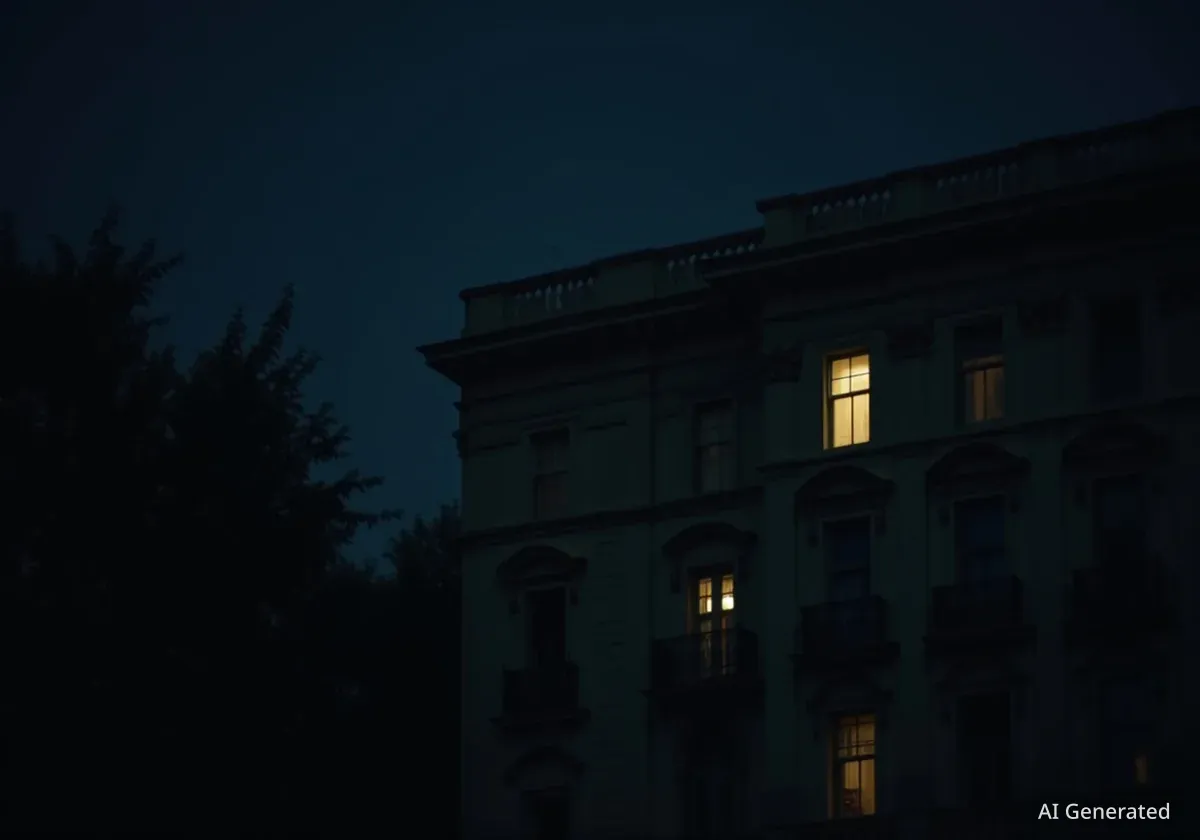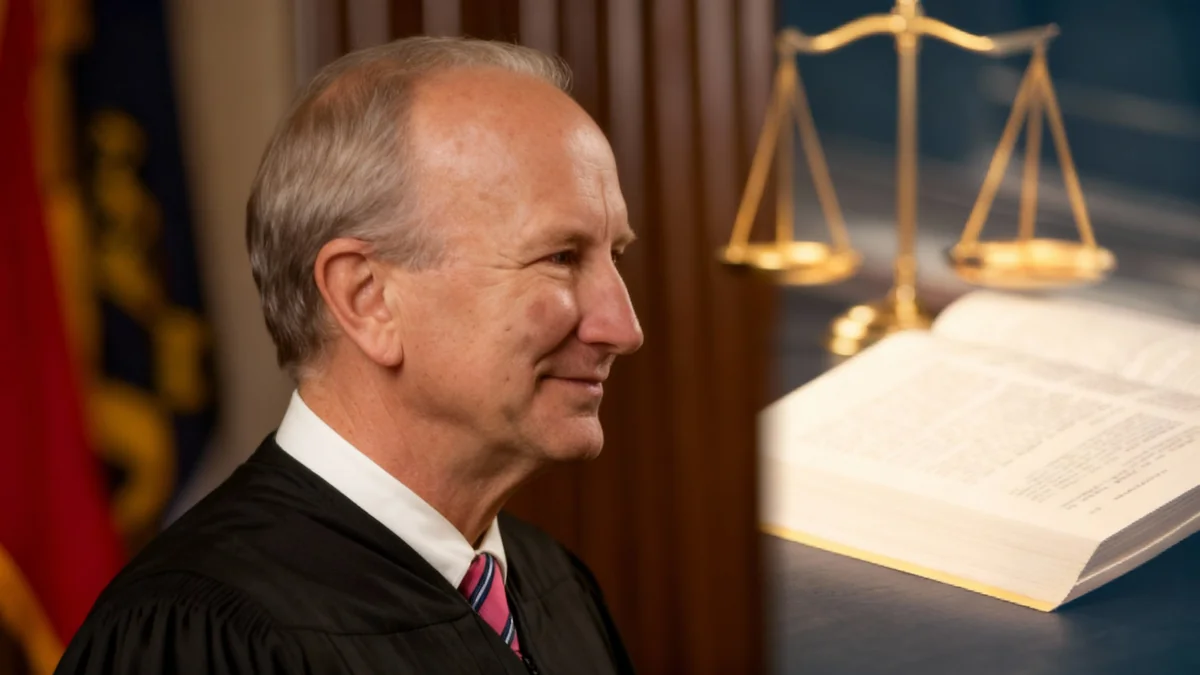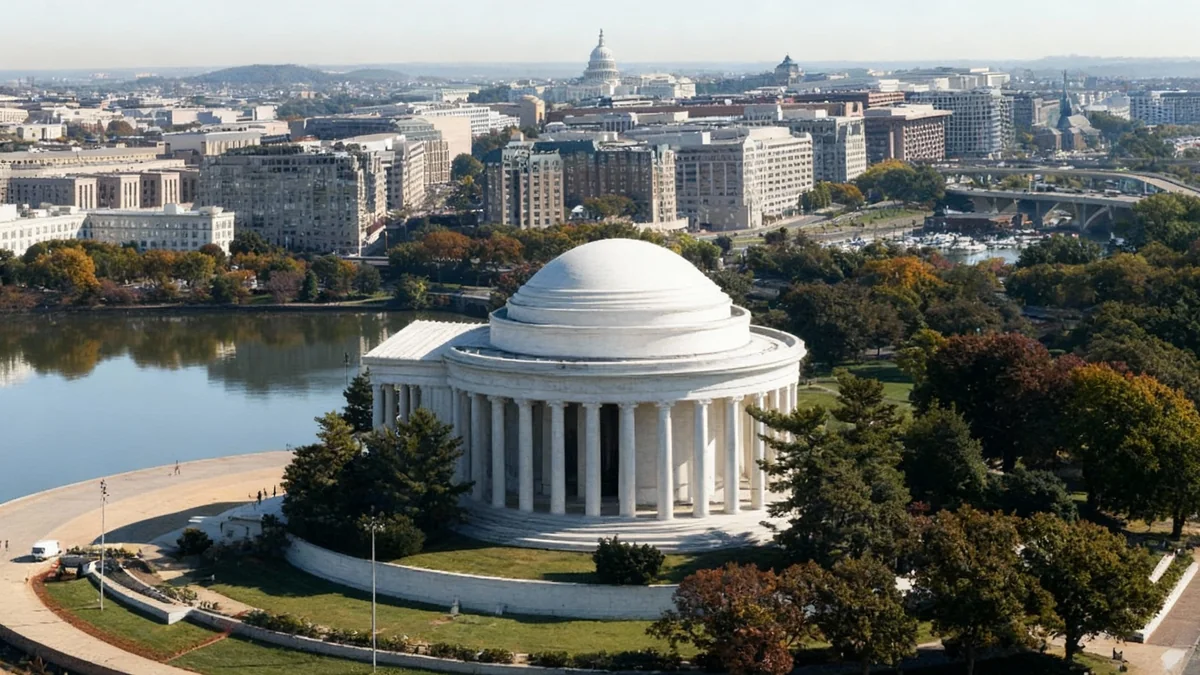A historic painting titled "Christ on the Water" has been returned to its original, prominent location at the U.S. Merchant Marine Academy in Kings Point, New York. The artwork was reinstalled under the direction of Secretary of Transportation Sean Duffy, reversing a previous decision by the Biden administration to move it following a complaint.
The painting, which had been displayed in a main conference room for over 75 years, was relocated to a less visible hallway after an organization raised concerns that its public display violated the Establishment Clause of the First Amendment. Secretary Duffy announced the restoration on social media, stating the artwork was being returned to its rightful place.
Key Takeaways
- The painting "Christ on the Water" was returned to its original place in Wiley Hall at the U.S. Merchant Marine Academy.
- Secretary of Transportation Sean Duffy ordered the restoration, fulfilling a promise he made.
- The artwork was previously moved after a complaint alleged it violated the separation of church and state.
- Created by artist Hunter Wood, the painting is a tribute to merchant mariners who served during World War II.
The Decision to Restore the Artwork
The decision to return the painting to its long-standing position was announced by Secretary of Transportation Sean Duffy. In a post on the social media platform X, Duffy confirmed the move and shared an image of the reinstalled artwork.
"Jesus is out of the basement! I promised you I would restore faith at @UsmmaO by returning ‘Christ on the Water’ to its place of prominence, where it belongs after being taken down under Biden and my predecessor," Duffy wrote.
The action directly counters the previous administration's handling of the situation. The painting had been moved from the Elliot M. See Conference Room in Wiley Hall to a rear hallway in the Mariners’ Memorial Chapel, a location considered less prominent by supporters of the artwork.
The Original Complaint and Relocation
The initial controversy began after a complaint was filed arguing that the painting's placement in a federal building sent an "improper message of preferred faith." The complaint cited the First Amendment's Establishment Clause, which prevents the government from establishing or endorsing a religion.
In response to this legal challenge, the Biden administration authorized the relocation of the painting. This decision was met with criticism from groups and individuals who viewed the artwork as a piece of historical and cultural heritage rather than a purely religious endorsement.
Understanding the Establishment Clause
The Establishment Clause is the first of several pronouncements in the First Amendment to the U.S. Constitution, stating, "Congress shall make no law respecting an establishment of religion." This clause is generally interpreted to prohibit the government from establishing a national religion or unduly favoring one religion over another. Its application in cases involving religious displays on public property remains a subject of ongoing legal debate.
Historical Significance of the Painting
The painting, officially titled "Christ on the Water," holds deep historical meaning for the U.S. Merchant Marine Academy. It was created by artist Hunter Wood in the 1940s and has been a fixture at the academy for 76 years prior to its removal.
According to academy records, Wood intended the piece as a tribute to the merchant seamen and cadet-midshipmen who faced perilous conditions during World War II, many of whom were torpedoed at sea. The artwork depicts Jesus appearing before a lifeboat of distressed sailors, symbolizing hope and salvation in a time of crisis.
About the Artist: Hunter Wood
Hunter Wood was not just an artist; he was also a service member. He served in both the U.S. Coast Guard and the U.S. Maritime Service during the 1940s. His direct experience included combat during the Allied invasion of North Africa in 1942, giving his work a profound sense of authenticity and connection to the mariners it honors.
Wood's other works are held in prestigious collections, including the John F. Kennedy Presidential Library and Museum, the Mariners’ Museum and Park, and the U.S. Coast Guard Historian’s Office, underscoring his importance as an artist of American maritime history.
The U.S. Merchant Marine Academy
The U.S. Merchant Marine Academy (USMMA) in Kings Point is one of the five federal service academies in the United States. Its mission is to educate and graduate licensed Merchant Marine Officers who serve America's marine transportation and defense needs in peace and war.
Unlike other service academies, graduates from USMMA have a wider range of service options. They can choose to work in the U.S. maritime industry and serve in a reserve component of the Armed Forces, or they can choose to be commissioned as active-duty officers in any branch of the military.
Notable Alumni
The academy has produced numerous distinguished graduates who have made significant contributions in various fields. Some well-known alumni include:
- Sen. Mark Kelly: A former astronaut and current U.S. Senator for Arizona.
- Robert Kiyosaki: An entrepreneur and author of the best-selling personal finance book “Rich Dad, Poor Dad.”
- Morgan Reeser: An Olympic silver medalist in sailing.
- Numerous admirals and high-ranking officials in the U.S. military and maritime industry.
The restoration of "Christ on the Water" has been framed by some observers within a broader context of cultural and historical preservation debates occurring nationwide. The decision highlights the ongoing tension between secular principles in government and the acknowledgment of religious themes in historical artifacts and traditions. For the academy's community and alumni, the painting's return marks the restoration of a piece of their institutional heritage.
